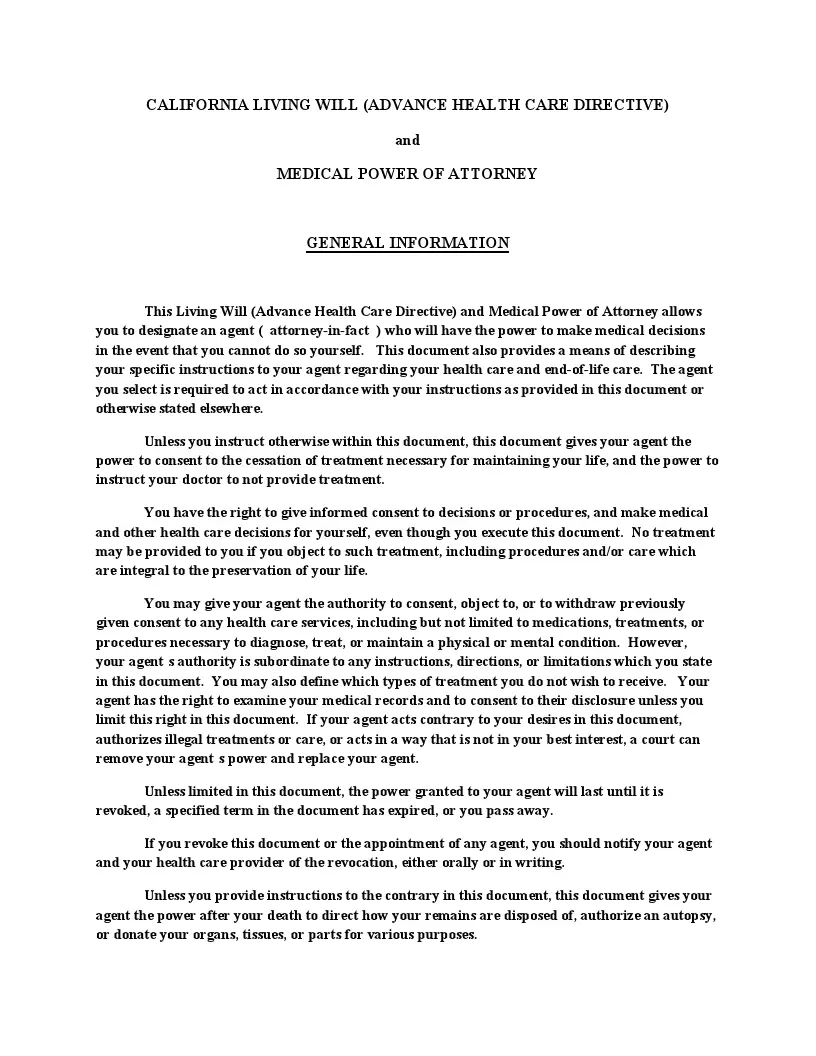Free California Living Will Form
A California Living Will is also called an Advanced Healthcare Directive. Normally, you can explain to your doctor which procedures you approve or disapprove of, which you want to avoid. California Living Will Form is issued for the circumstances when you can no longer personally take care of your health treatment.
With a living will form, you can resolve two important matters: determining who will act as an agent (someone you trust and who will be able to take responsibility for making medical decisions for you) and indicating your prior order for health service and donation of organs or body after death. If desired, you can limit the powers of your trusted person.
Signing Requirements and Laws
According to § 4600 to § 4736 of California state law, a California Living Will is written by an adult with the legal capacity to understand the paper.
The document has limitations. For example, it does not allow for decisions to be made related to abortion, sterilization, mercy killings, assisted suicide, or euthanasia. It may not be used for commitment or placement into a mental health treatment facility.
You must date and sign the form and have it signed by two competent witnesses or acknowledged before a notary public.
Almost any adult you know can act as a witness. But people associated with providing you with health services cannot become a witness, for example, your healthcare provider, an employee of a community care facility, or a care home for the elderly. Aside from that, there are no restrictions, but be careful. You cannot indicate one person as a witness and agent at the same time.
In addition to the above-mentioned, witnesses must meet these requirements:
- being not related to you by blood, marriage, or adoption
- being not entitled to any part of your estate upon your death under a will now existing or by operation of law.
According to § 4675 of the California Code, a patient lawyer or ombudsman must present at the time of signing the form if you are staying in a skilled nursing facility.
After signing, you must provide a signed duplicate of the California Living Will to your physician, any other health care providers you may have, any healthcare institution at which you are receiving care, and any health care agents you have named.
California Living Will Form Details
| Document Name | California Living Will Form |
| State Form Name | California Advance Health Care Directive |
| Signing Requirements | Two Witnesses or Notary Public |
| Validity Requirements | Section 4673 |
| Powers Limitation | Section 4683 |
| Avg. Time to Fill Out | 13 minutes |
| # of Fillable Fields | 48 |
| Available Formats | Adobe PDF; Microsoft Word |
| State Laws: California Probate Code, Sections 4670 to 4698 | |
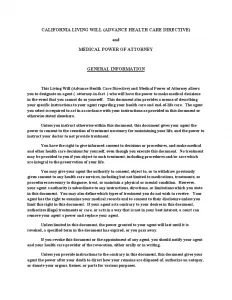
Steps to Fill the Form
The document may be confusing at first, but you can easily generate a California Living Will by following these steps:
1. Download the form on our website
To fill out the California Living Will form, use Online Forms Building Software we have on our website to ensure you do it right.
2. Designate your agents
Here you may specify the agent and two alternative ones in the event the first agent cannot fulfill his obligations. Approach the choice of an agent with the utmost care; it should be a person whom you trust and who respects your wishes and beliefs, and who will follow them even despite their inner prejudices.
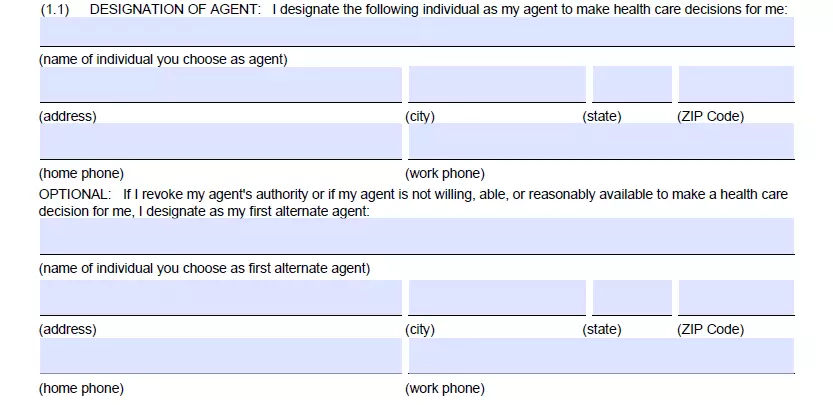
3. Specify the agent’s authority
If you need to restrict an agent’s action-taking powers, you can specify the cases in which the agent cannot make a decision. For example, you can specify that the agent cannot decide to disconnect you from artificial nutrition. Separately, you can specify the limitations associated with the decision on organ donation or autopsy.

4. Choose end-of-life instructions
In this part of the California Living Will, you can provide healthcare and post-death instructions. You can cross out any of the wording mentioned here if you are not satisfied with any part of it.
It is proposed to make decisions:
- to prolong or not to prolong the life
You can choose the solution to extend your life using any available services, whether it is an artificial respirator or an artificially induced coma, or you can limit the decision, for example, in the case of painful and challenging treatment with a small chance of recovery;
- relief from pain
Indicate if you do not want to use any pain relief regimens, for example, if your physician tells you about the risks;
- other wishes
The points above cover the most common scenarios for which this document was created. Still, you can supplement them or add your wishes and preferred actions regarding healthcare or post-death instructions.
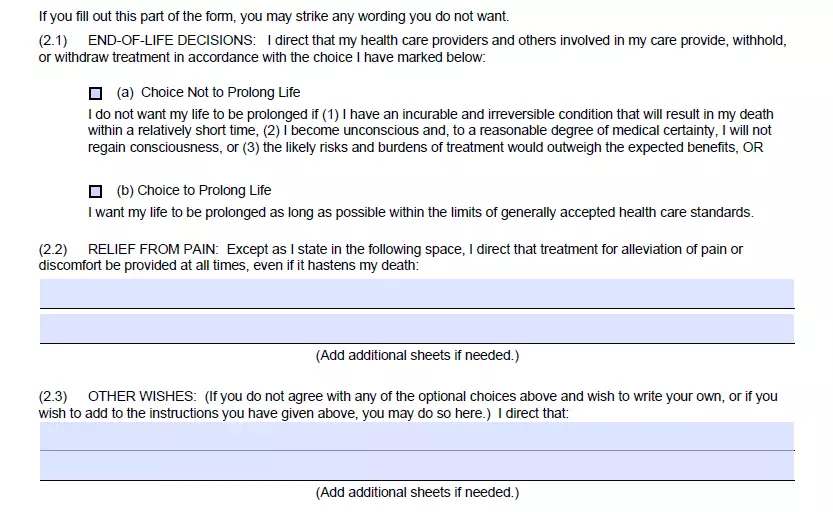
5. Indicate your attitude towards donation of organs
This section is optional. If you tick this box, you authorize the autopsy and donation of your organs, tissues, or body. You can limit the purpose of use by crossing off an option that you consider invalid. If you choose not to fill out this part of the form, it will not mean your refusal to donate, so if you want somehow to restrict the use of your organs after death, we recommend you complete this paragraph.
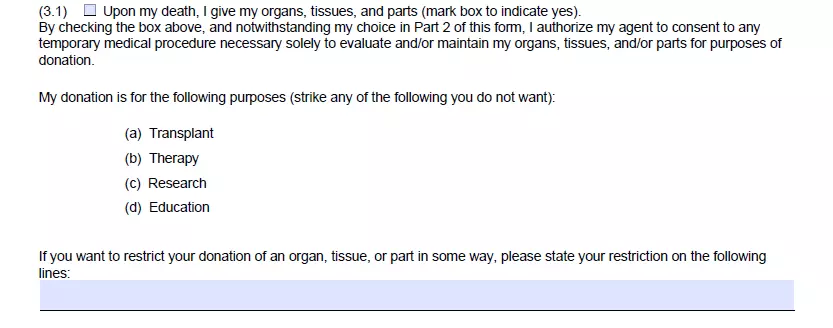
6. Designate a primary physician
This section is also optional. Here you can specify your primary physician and alternate primary physician, address, and contact details.

7. Sign the form
You must date and sign the document in front of two witnesses or a notary. The accurate instructions and limitations for choosing a witness are given above.

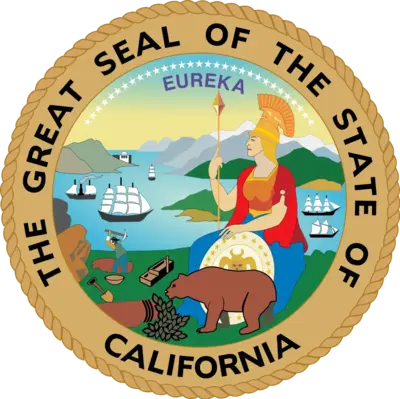
Check out our document builder to personalize any template found on FormsPal to your requirements. Here’s a list of various other popular California forms we offer.

